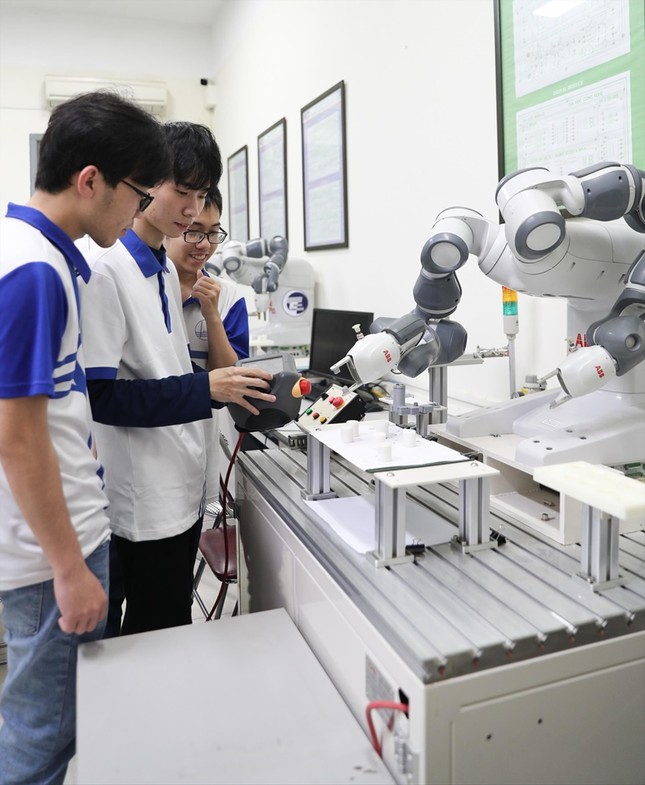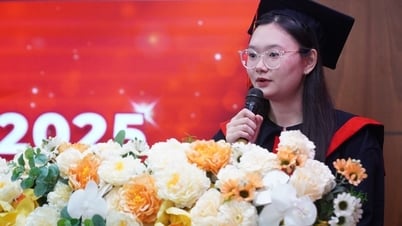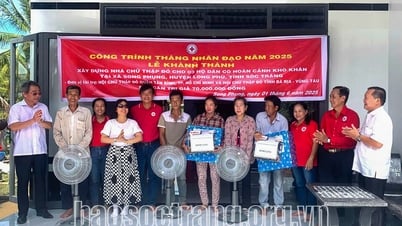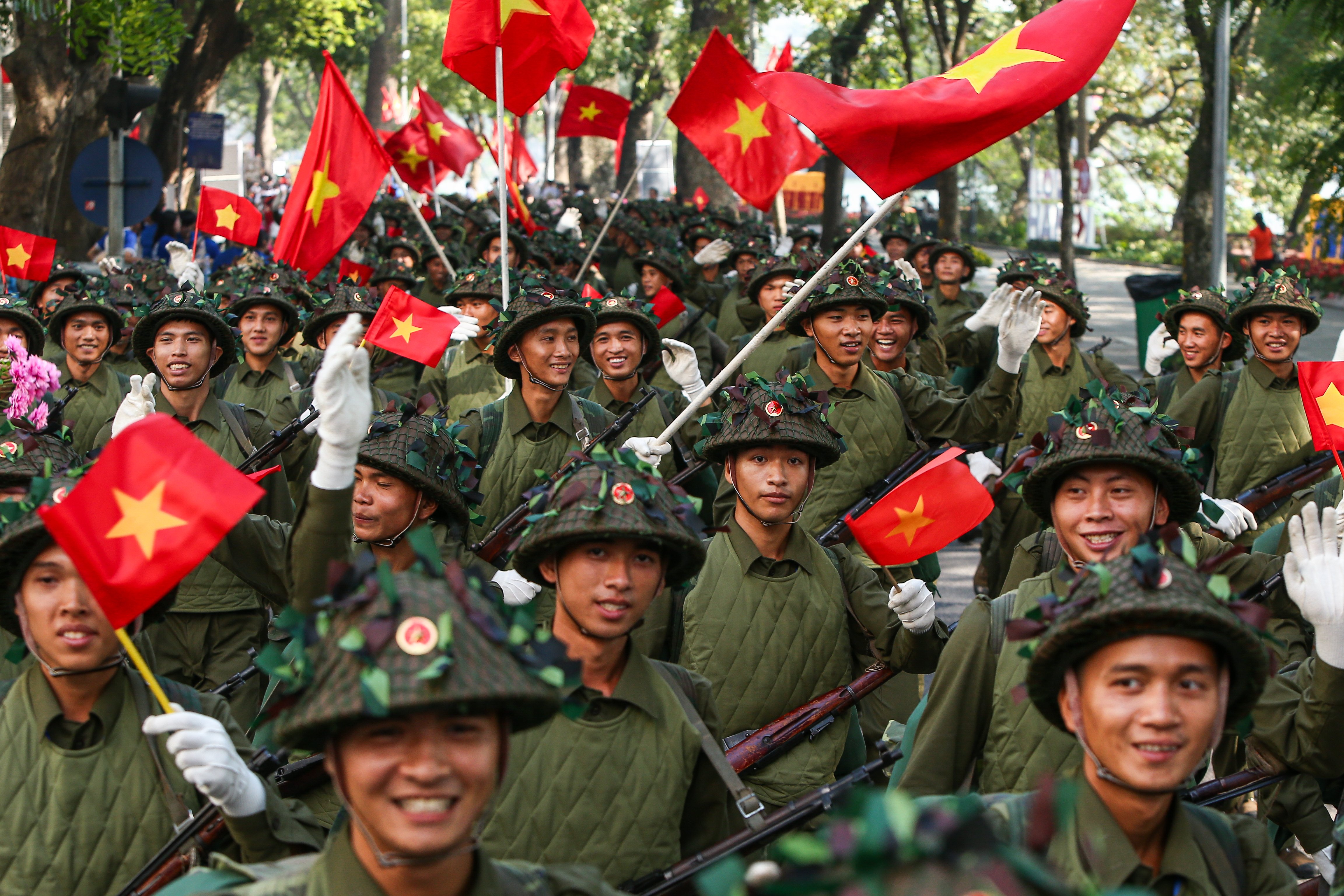 |
| Technology students practice in the lab. Photo: Hoa Ban |
Math priority
According to the Standard for Semiconductor Microcircuit Training Programs at the undergraduate and master levels issued by the Ministry of Education and Training , effective from May 13, for bachelor and engineer programs, with the admission method based on the results of the high school graduation exam, the subjects for admission must meet the following requirements: have Mathematics; have at least one subject in Natural Sciences suitable for the Semiconductor Microcircuit Training Program. The total score of the subjects in the admission combination must reach at least 80% of the scale (for example: at least 24/30 for a combination of 3 subjects); the Math test score must reach at least 80% of the scale (at least 8/10).
According to Associate Professor Dr. Nguyen Anh Dung, Deputy Director of the Department of HigherEducation (Ministry of Education and Training), this input standard only applies to higher education institutions participating in the implementation of the Program "Developing human resources for the semiconductor industry to 2030, with a vision to 2050" (Decision 1017).
According to Decision 1017, there are 18 universities, academies, and colleges applying this regulation when enrolling in semiconductor microcircuit majors, including: Ho Chi Minh City National University (University of Information Technology), Hanoi National University (University of Natural Sciences), Hanoi University of Science and Technology, Academy of Posts and Telecommunications; Danang University, Thai Nguyen University; University of Electricity, Cryptography Academy, Ho Chi Minh City University of Technical Education, Hue University, Military Technical Academy, Vinh University, Can Tho University, Hanoi University of Science and Technology, Hanoi University of Industry, Ho Chi Minh City University of Industry, Vietnam-Germany University, University of Transport. Decision 1017 also stipulates 38 semiconductor microcircuit majors at university level and 38 post-graduate majors.
Thus, only the 18 university training institutions above when enrolling students in the semiconductor microchip industry (in the group of 38 industries regulated by the training program standards) require candidates to consider the results of the high school graduation exam to simultaneously meet the two above conditions. Associate Professor, Dr. Nguyen Anh Dung noted that candidates need to carefully study the regulations, because this training program standard applies to schools in Decision 1017. Schools that do not participate in the project will not be required to comply with this regulation, meaning that schools can still enroll students in this industry with other regulations.
However, up to now, the Ministry of Education and Training has not yet provided specific guidance on the rights of candidates admitted to schools included in Decision 1017. The Decision only provides general regulations on research, development and completion of specific mechanisms for financial support for learners, including scholarships and tuition exemptions for training programs approved by the Ministry of Education and Training and competent authorities to implement the program.
Schools are concerned
Associate Professor Dr. Nguyen Phong Dien, Vice President of Hanoi University of Science and Technology, said that the university trains many majors related to semiconductor microchips. This year, the school added an in-depth engineering program on microchips. Mr. Dien affirmed that candidates choose majors based on market demand and government orientation. According to Mr. Dien, this year, the semiconductor microchip group will attract the majority of candidates. Regarding the entrance standards, Mr. Dien said that this is a group of majors in the top of Hanoi University of Science and Technology's high standard scores, so it certainly meets the requirements of the program standards.
Decision 1017 sets a goal of training at least 50,000 human resources with university degrees or higher to serve the semiconductor industry by 2030.
Although not on the list of 18 schools, Prof. Dr. Chu Duc Trinh, Principal of the University of Technology (Vietnam National University, Hanoi) said that this year, the school will enroll students in majors related to semiconductors including: Telecommunications Electronics, Computer Engineering, Artificial Intelligence (AI), Engineering Physics, Materials Technology, Mechatronics. These are majors that always have the highest standard scores in the school.
Associate Professor Dr. Nguyen Anh Dung said that when developing the training program standards, the professional advisory board realized that the basic knowledge for students to study well in the semiconductor and STEM fields is especially related to Mathematics. During the process of studying and working in the semiconductor industry, students have to use a lot of knowledge about Mathematics. He added that when surveying the learning outcomes of students as well as evaluating the training outcomes for students studying engineering and technology fields related to semiconductors, it showed that students need a basic knowledge of Mathematics of 8 points or higher to achieve the best results in the learning process.
However, representatives of many universities are wondering why the Ministry chose the Math score standard for the high school graduation exam, an exam with an unstable level of difficulty. If this exam were not organized on the current scale, would the Ministry have to adjust the program standards? More importantly, why not set common requirements for all training institutions recruiting students for this group of high-tech industries?
Source: https://tienphong.vn/tuyen-sinh-dai-hoc-2025-luu-y-khi-xet-tuyen-nhom-nganh-vi-mach-ban-dan-post1747037.tpo




























































































Comment (0)